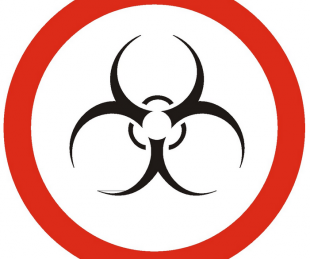This guideline covers as many different subjects as possible that can occur at events. However, it is possible that activities or actions will take place at your event that may cause an infection risk, but are not mentioned in this guideline. In that case, you can use other guidelines, such as other guidelines from the LCHV National Center for Hygiene and Safety, or seek advice from the corporation in your region. With the free bloodborne pathogens training you can now have the best choices.
Hygiene and pathogens
Good hygiene prevents the spread of microorganisms. Examples of micro-organisms are bacteria, viruses, fungi and parasites. Most are harmless or even useful to humans, but some can cause illnesses. Through contact between people, these pathogens can spread from one person to another.
How do pathogens spread?
Pathogens spread in the following ways:
- Through the hands,
- Via body fluids (stools, urine, blood, wound fluid, sperm, saliva or vomit),
- By air (via drops through cough, skin flakes or dust),
- Via food and water,
- Via objects (drinking cups and toilets),
- Via animals (insects and (domestic) animals (and their feces).
If these pathogens then multiply in the body, someone can get sick. We call these diseases infectious diseases. Whether an infection develops into an infection, has to do with several things:
- The amount of pathogen that infects someone,
- How easily the pathogen makes people sick,
- A person’s physical condition. The one gets sick, the other doesn’t feel well and a third doesn’t bother.
Hygiene prevents illness
In the first place, you limit infection risks through good hygiene. All the rules in this directive have to do with this. Basically, hygiene is no more than the following:
- Do not bring what is dirty into contact with what is clean and vice versa.
- Clean or throw away what is dirty.
- You cannot always judge from the outside whether something is dirty or clean.
- Everything starts and ends with hand hygiene.
Hygiene standards
The hygiene standards are in a yellow frame. These measures are assessed by the corporation when granting permits. You may only deviate from this if you use a comparable or better alternative. The corporation inspector assesses whether a method, method or means is a comparable or better alternative.
Tips and advice are in italics in a gray frame. These points are without obligation. But if you follow the advice you work in a more hygienic way.
Hygienic handling
For optimum hygiene, it is not only important that your employees know how to work, but also why they should do that.
Hygiene standards
Make sure your employees know how to handle the requirements that apply to the event and what they can do to combat infectious diseases.
Personal hygiene

Employees, visitors or participants have a lot of contact with each other. Pathogens can easily spread through the hands, clothing and shared materials. Good personal hygiene reduces the risk of infection.
Hand hygiene
There are two ways you can apply hand hygiene. By washing the hands with soap and water or by disinfecting the hands with a hand sanitizer.
Hygiene standards
Wash your hands with water and liquid soap if your hands are visibly dirty.
Do not use a hand sanitizer, visible dirt reduces the effect.
Are your hands not visibly dirty? Then you can choose whether you wash or disinfect your hands.
For good hand hygiene, it is sufficient if you only wash or disinfect. So don’t do both directly after each other, your skin will then dry out more and damage more quickly.

